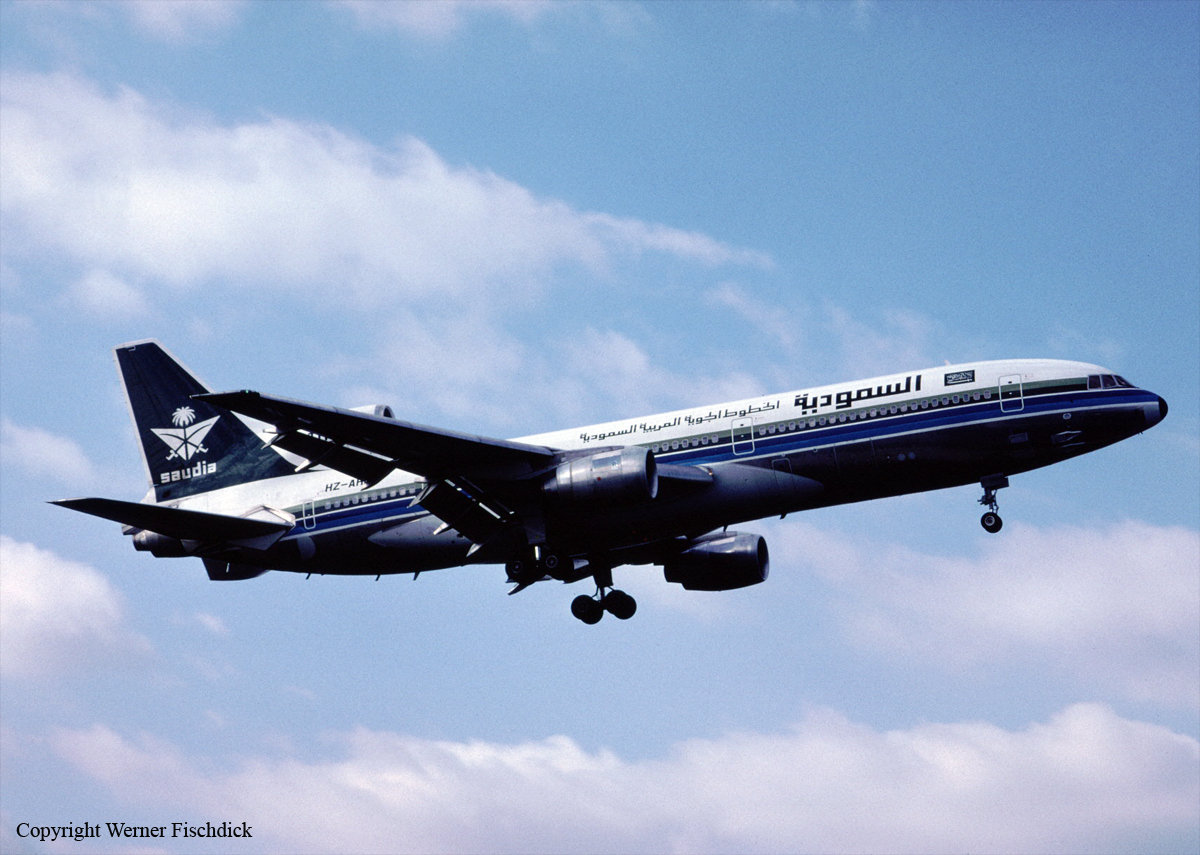Country
Crash of a Lockheed L-1011-385-1 TriStar 1 in New York
Date & Time:
Jul 30, 1992 at 1741 LT
Registration:
N11002
Survivors:
Yes
Schedule:
New York - San Francisco
MSN:
193B-1014
YOM:
1972
Flight number:
TW843
Crew on board:
12
Crew fatalities:
Pax on board:
280
Pax fatalities:
Other fatalities:
Total fatalities:
0
Captain / Total hours on type:
2397.00
Copilot / Total hours on type:
2953
Aircraft flight hours:
49662
Aircraft flight cycles:
19659
Circumstances:
Immediately after liftoff the stick shaker activated, and the first officer, who was making the takeoff, said 'you got it.' The captain took control, closed the thrust levers, and landed. He applied full reverse thrust and maximum braking, and turned the airplane off the runway to avoid a barrier at the end. A system design deficiency permitted a malfunctioning aoa sensor to cause a false stall warning. The sensor had experienced 9 previous malfunctions, and was inspected and returned to service without a determination on the reason for the intermittent malfunction. The first officer had incorrectly perceived that the airplane was stalling and gave control to the captain without proper coordination of the transfer of control. All 292 occupants were rescued, among them 10 were injured, one seriously.
Probable cause:
Design deficiencies in the stall warning system that permitted a defect to go undetected, the failure of twa's maintenance program to correct a repetitive malfunction of the stall warning system, and inadequate crew coordination between the captain and first officer that resulted in their inappropriate response to a false stall warning.
Final Report:
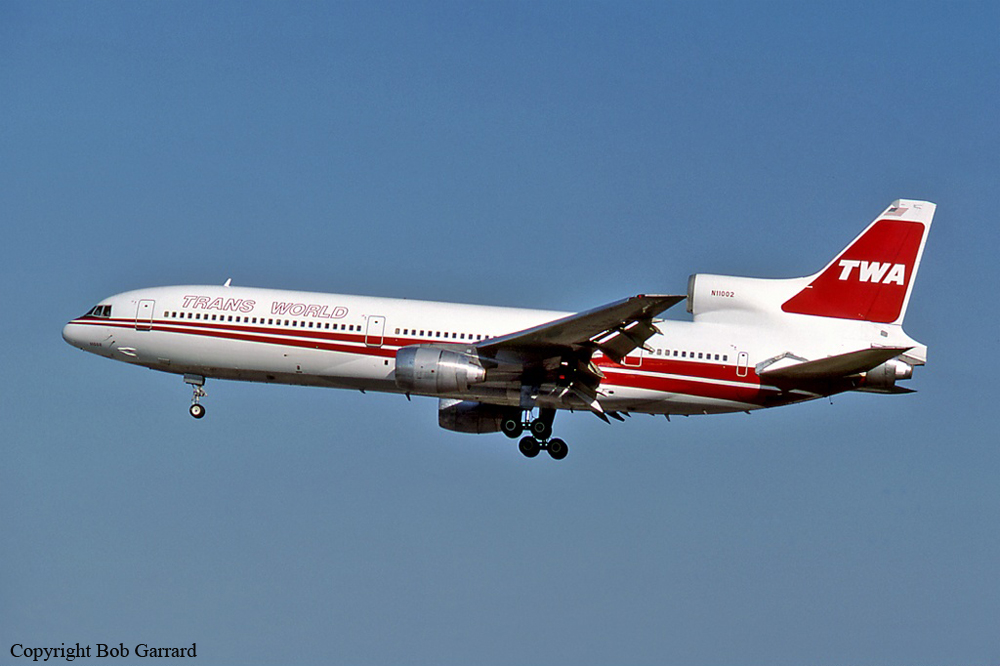
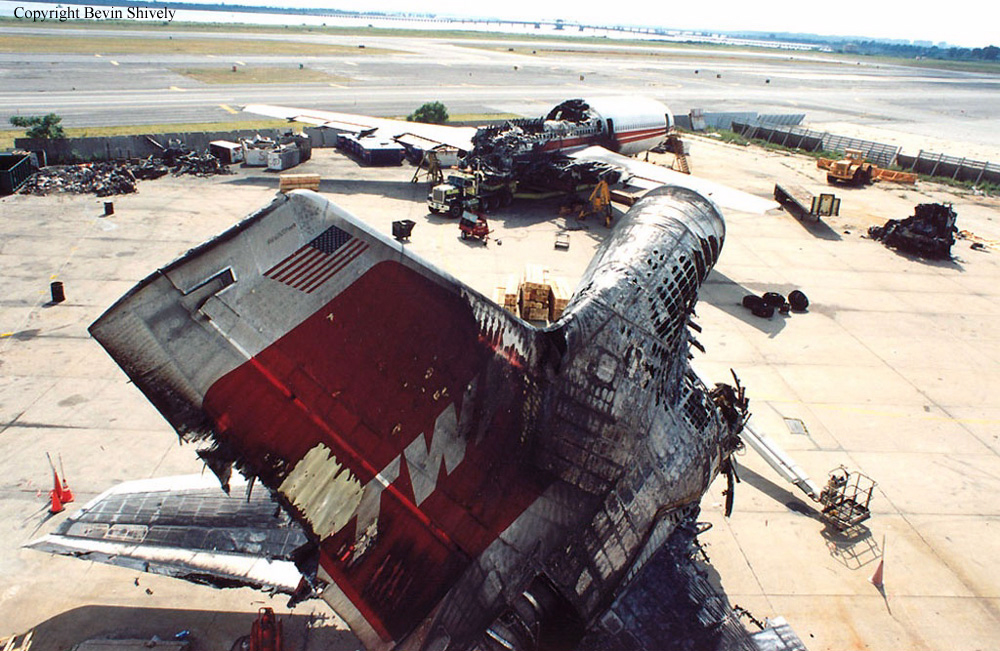
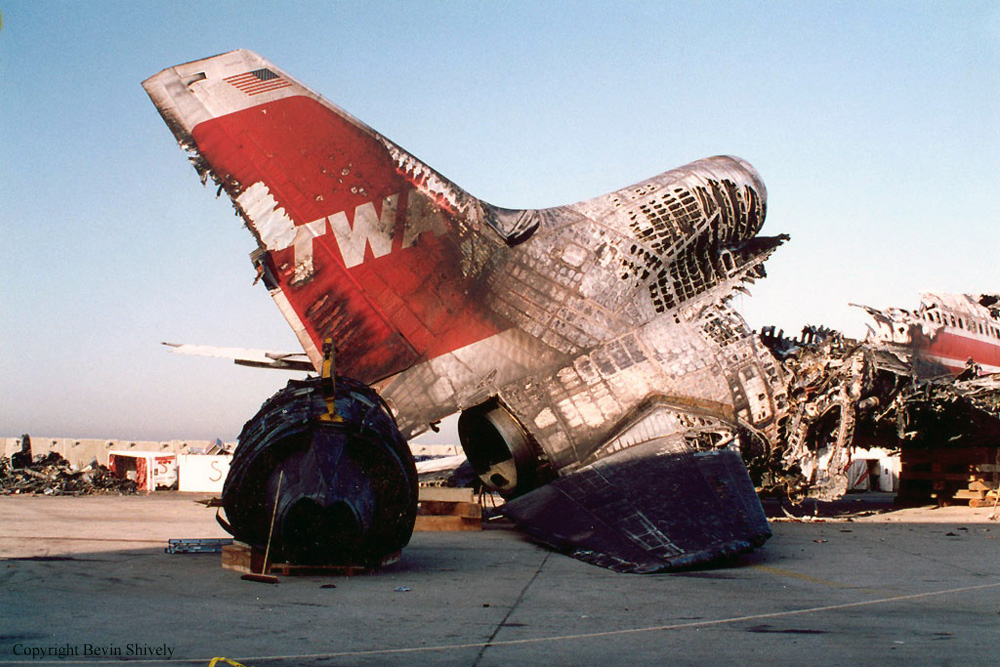
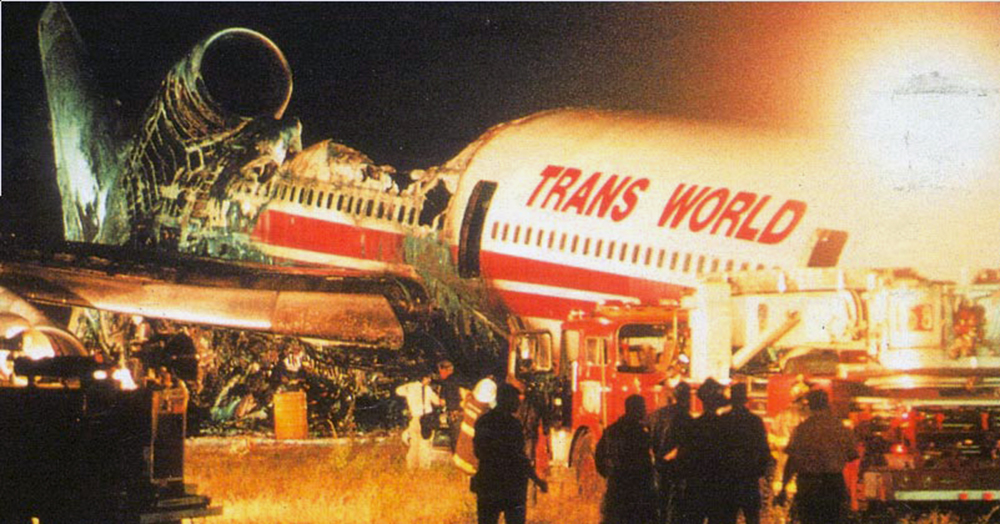
Ground explosion of a Lockheed L-1011 TriStar 100 in Colombo: 16 killed
Date & Time:
May 3, 1986 at 0905 LT
Registration:
4R-ULD
Survivors:
Yes
Schedule:
London - Zurich - Dubai - Colombo - Male
MSN:
193P-1061
YOM:
1974
Flight number:
UL512
Crew on board:
22
Crew fatalities:
Pax on board:
128
Pax fatalities:
Other fatalities:
Total fatalities:
16
Aircraft flight hours:
28915
Aircraft flight cycles:
16666
Circumstances:
While parked at Colombo-Bandaranaike Airport, the aircraft was preparing for the last leg to Male. Ground personnel was still servicing the aircraft with fuel and catering and about 150 people were on board when an explosion occurred in the rear part of the cabin. The aircraft was cut in two and partially destroyed by fire. 46 people were injured, 88 were unhurt and 16 passengers were killed.
Probable cause:
It was determined that the explosion was the consequence of a bomb placed on board by the Liberation Tigers of Tamil Eelam (LTTE).
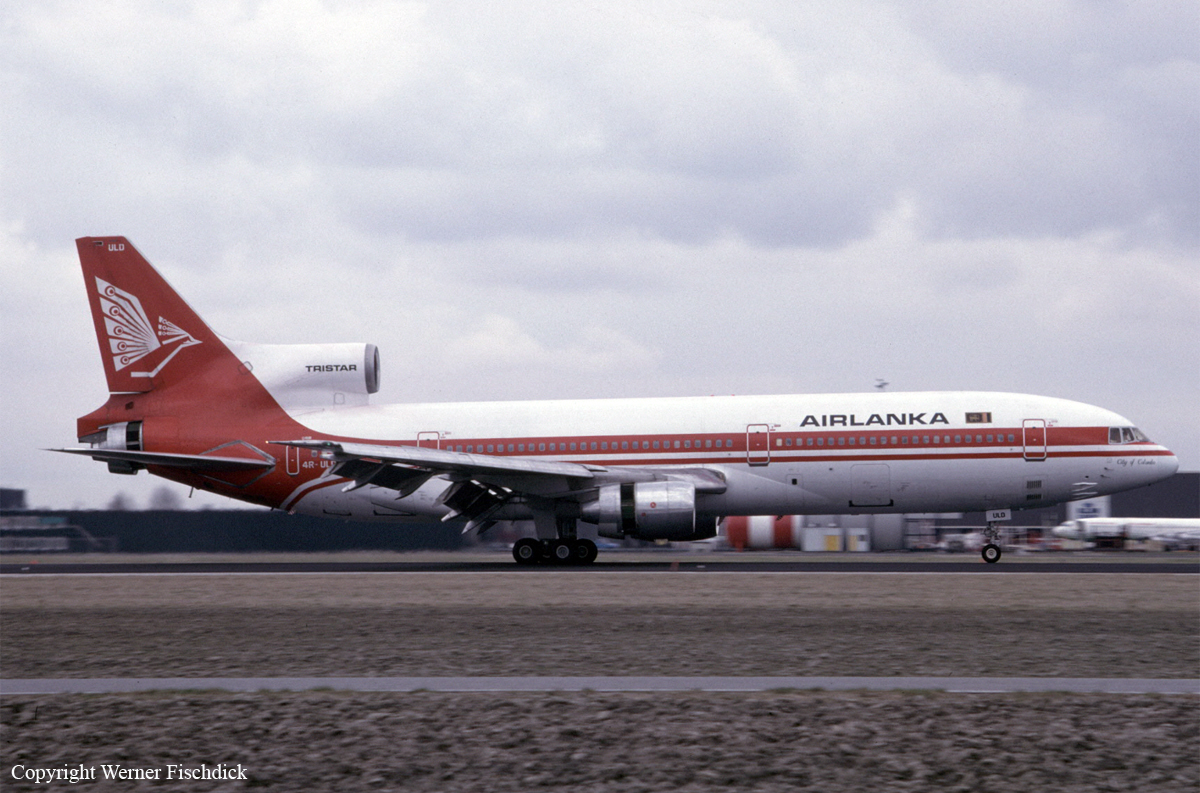
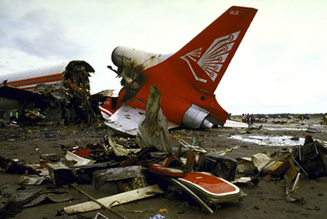
Crash of a Lockheed L-1011-385 TriStar 1 in Dallas: 135 killed
Date & Time:
Aug 2, 1985 at 1805 LT
Registration:
N726DA
Survivors:
Yes
Schedule:
Fort Lauderdale - Dallas - Los Angeles
MSN:
193C-1163
YOM:
1979
Flight number:
DL191
Crew on board:
11
Crew fatalities:
Pax on board:
152
Pax fatalities:
Other fatalities:
Total fatalities:
135
Captain / Total hours on type:
3000.00
Copilot / Total hours on type:
1200
Aircraft flight hours:
20555
Aircraft flight cycles:
11186
Circumstances:
Delta Air Lines flight 191 was a regularly scheduled passenger flight between Fort Lauderdale, FL (FLL), and Los Angeles, CA (LAX), with an en route stop at the Dallas/Fort Worth International Airport, TX (DFW). Flight 191, a Lockheed L-1011 TriStar airplane, departed Fort Lauderdale on an IFR flight plan with 152 passengers and a crew of 11 on board at 15:10 EDT. The DFW Airport terminal weather forecast contained in the flightcrew's dispatch document package stated, in part, that there was a possibility of widely scattered rain showers and thunderstorms, becoming isolated after 20:00 CDT. The flight was uneventful until passing New Orleans, Louisiana. A line of weather along the Texas-Louisiana gulf coast had intensified. The flightcrew elected to change their route of flight to the more northerly Blue Ridge arrival route to avoid the developing weather to the south. This change necessitated a 10 to 15-minute hold at the Texarkana, Arkansas, VORTAC for arrival sequencing at the DFW Airport. At 17:35, the flightcrew received the following ATIS broadcast: "DFW arrival information romeo, two one four seven Greenwich, weather six thousand scattered, two one thousand scattered, visibility one zero, temperature one zero one, dew point six seven, wind calm, altimeter two niner niner two, runway one eight right one seven left, visual approaches in progress, advise approach control that you have romeo". Fort Worth Air Route Traffic Control Center (ARTCC) then cleared flight 191 to the Blue Ridge, Texas, VORTAC for the Blue Ridge Nine arrival, and to begin its descent. At 17:43:45, Fort Worth ARTCC cleared flight 191 to descend to 10,000 feet, gave it a 29.92 in Hg altimeter setting, and suggested that the flight turn to a heading-of 250 degrees "to join the Blue Ridge zero one zero radial inbound and we have a good area there to go through.!' The captain replied that he was looking at a "pretty good size" weather cell, "at a heading of two five five ... and I'd rather not go through it, I'd rather go around it one way or the other." Fort Worth ARTCC then gave the flight another heading and stated "when I can I'll turn you into Blue Ridge, it'll be about the zero one zero radial." At 17:46, the center cleared flight 191 direct to Blue Ridge and to descend to 9,000 feet, and flight 191 acknowledged receipt of the clearance. At 17:48, the captain told the first officer, "You're in good shape. I'm glad we didn't have to go through that mess. I thought sure he was going to send us through it." Three minutes later, the flight engineer said, "Looks like it's raining over Fort Worth." At 17:51, Forth Worth ARTCC instructed flight 191 to contact DFW Airport Approach Control. At 17:56:28, Regional Approach Control's Feeder East controller transmitted an all aircraft message which was received by flight 191. The message stated in part, "Attention, all aircraft listening... there's a little rainshower just north of the airport and they're starting to make ILS approaches ... tune up one oh nine one for one seven left." At 17:59, the first officer stated, "We're gonna get our airplane washed," and the captain switched to Regional Approach Control's Arrival Radar-1 (AR-1) frequency and told the controller that they were at 5,000 feet. At 18:00, the approach controller asked American Air Lines flight 351 if it was able to see the airport. (Flight 351 was two airplanes ahead of flight 191 in the landing sequence for runway 17L.) Flight 351 replied, "As soon as we break out of this rainshower we will." The controller then told flight 351 that it was 4 miles from the outer marker, and to join the localizer at 2,300 feet; the controller then cleared the flight for the ILS approach to runway 17L. At 18:00, the approach controller asked flight 191 to reduce its airspeed to 170 knots, and to turn left to 270 degrees; flight 191 then acknowledged receipt of the clearance. Flight 191 had been sequenced behind a Learjet 25 for landing on runway 17L. At 18:02, the approach controller told flight 191 that it was 6 miles from the outer marker, requested that it turn to 180 degrees to join the localizer at or above 2,300 feet, and stated, "Cleared for ILS one seven left approach." The flight acknowledged receipt of the transmission. At 18:03:03, the approach controller requested flight 191 "to reduce your speed to one six zero please," and the captain replied, "Be glad to." Thereafter, at 18:03:30, he broadcast, "And we're getting some variable winds out there due to a shower... out there north end of DFW." This transmission was received by flight 191. At 18:03:46, the approach controller requested flight 191 to slow to 150 KIAS, and to contact the DFW Airport tower. At 18:03:58, the captain, after switching to the tower's radio frequency, stated, "Tower, Delta one ninety one heavy, out here in the rain, feels good." The tower cleared the flight to land and informed it, "wind zero nine zero at five, gusts to one five." At 18:04:07, the first officer called for the before-landing check. The flightcrew confirmed that the landing gear was down and that the flaps were extended to 33 degrees, the landing flap setting. At 18:04:18, the first officer said, "Lightning coming out of that one." The captain asked, "What?" and the first officer repeated "Lightning coming out of that one." The captain asked, and at 18:04:23, the first officer replied, "Right ahead of us." Flight 191 continued descending along the final approach course. At 18:05:05 the captain called out "1,000 feet." At 18:05:19, the captain cautioned the first officer to watch his indicated airspeed and a sound identified as rain began. The captain then warned the first officer, "You're gonna lose it all of a sudden, there it is." The captain stated, "Push it up, push it way up." At 18:05:29, the sound of engines at high rpm was heard on the CVR, and the captain said "That's it." At 18:05:44, the Ground Proximity Warning System's (GPWS) "Whoop whoop pull up" alert sounded and the captain commanded "TOGA". The CVR recording ended at 18:05:58. Witnesses on or near State Highway 114 north of the airport saw flight 191 emerge from the rain about 1.25 miles from the end of runway 17L and then strike an automobile in the westbound lane of State Highway 114. Subsequent investigation showed that the airplane had touched down earlier and became airborne again before striking the automobile. After the plane struck the car and a light pole on the highway, other witnesses saw fire on the left side of the airplane in the vicinity of the wing root. The witnesses generally agreed that the airplane struck the ground in a left-wing-low attitude, and that the fuselage rotated counterclockwise after the left wing and cockpit area struck a water tank on the airport. A large explosion obscured the witnesses' view momentarily, and then the tail section emerged from the fireball, skidding backwards. The tail section finally came to rest on its left side with the empennage pointing south and was subsequently blown to an upright position by wind gusts. One hundred and thirty-four persons on board the airplane and the driver of the automobile which was struck by the airplane were killed in the accident; 27 persons on board the airplane and 1 rescue worker at the accident site were injured, 2 passengers on the airplane were uninjured.
Probable cause:
The flight crew's decision to initiate and continue the approach into a cumulonimbus cloud which they observed to contain visible lightning; the lack of specific guidelines, procedures and training for avoiding and escaping from low-level windshear; and the lack of definitive, real-time windshear hazard information. This resulted in the aircraft's encounter at low altitude with a microburst-induced, severe windshear from a rapidly developing thunderstorm located on the final approach course.
Final Report:
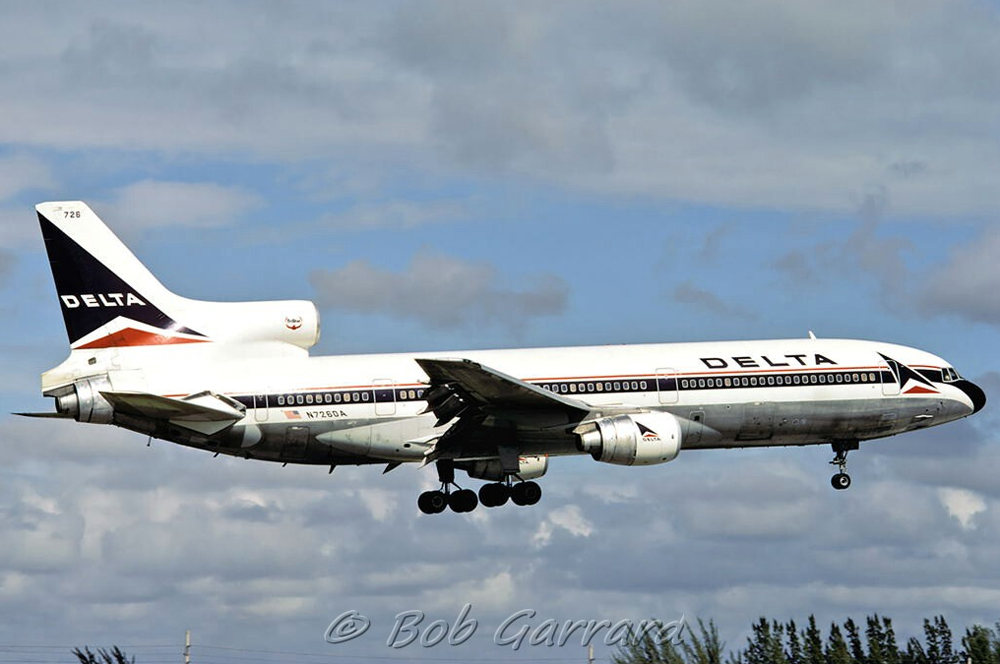
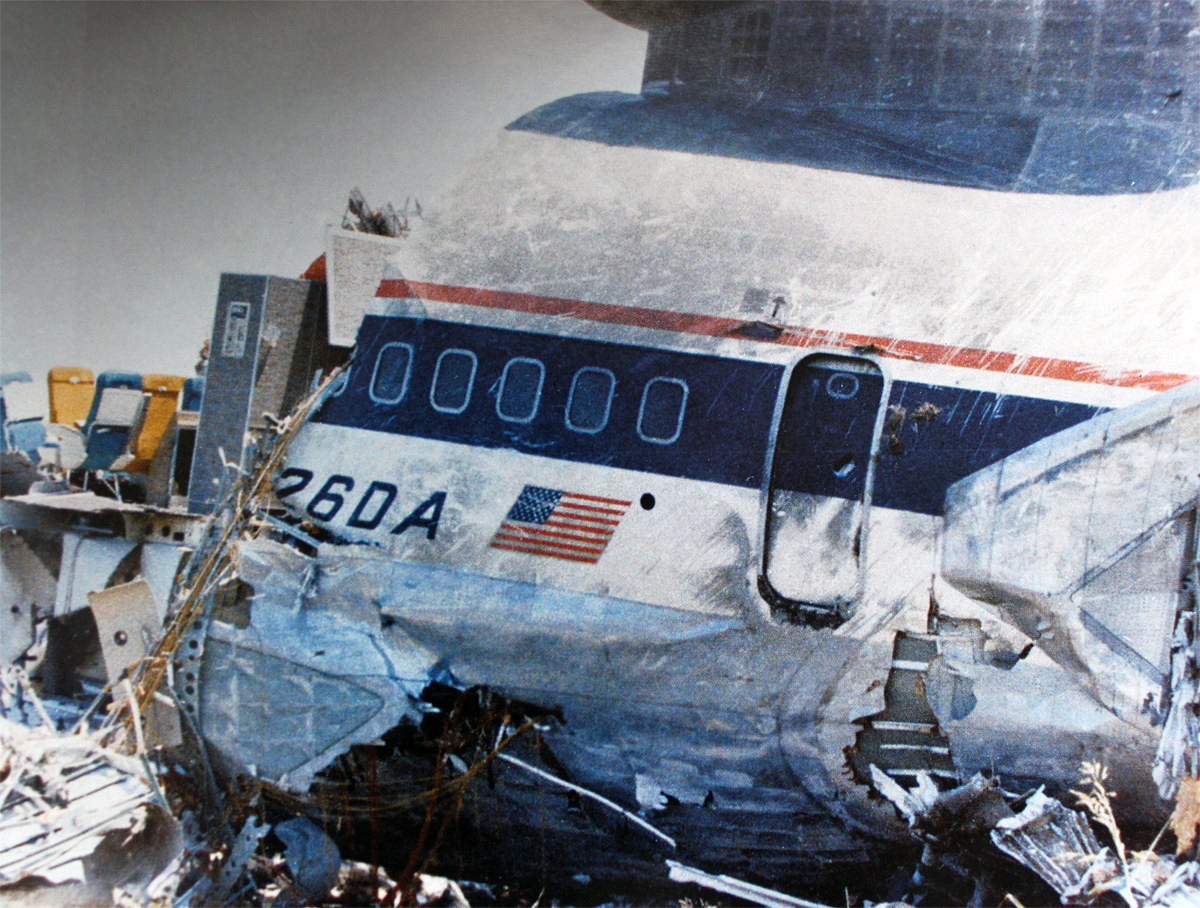
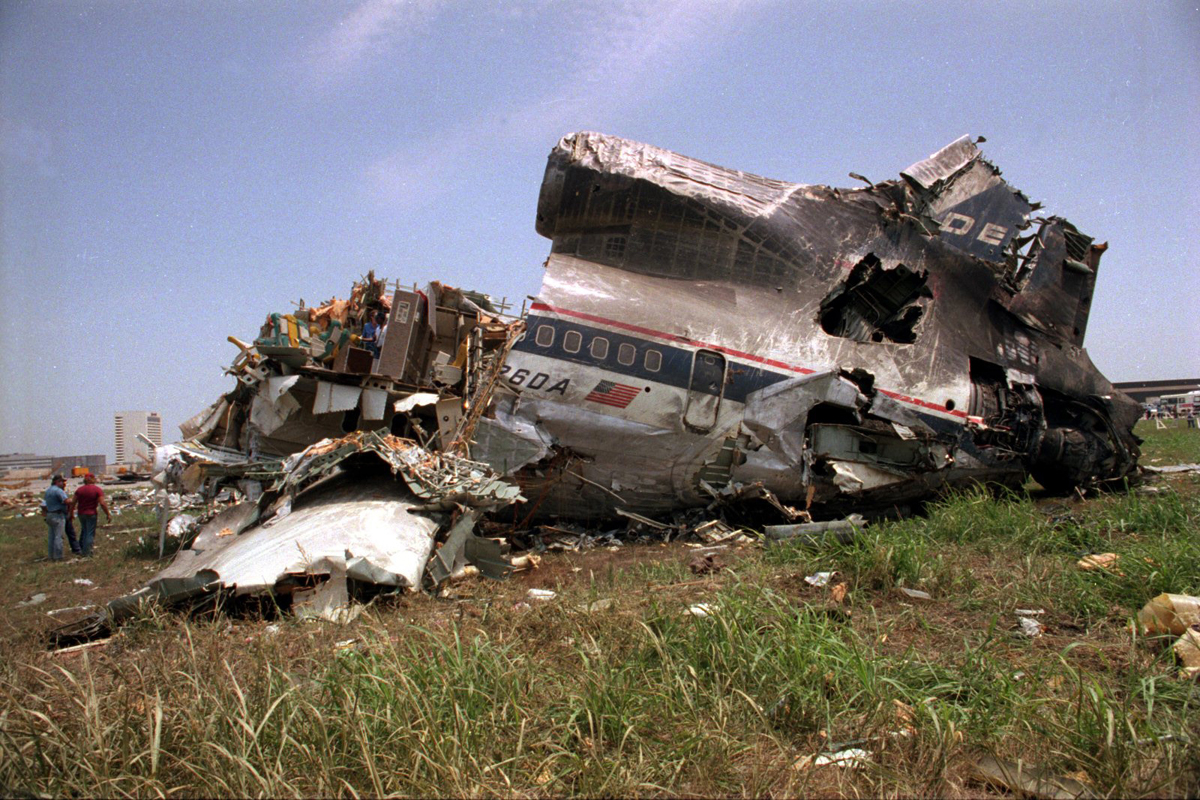
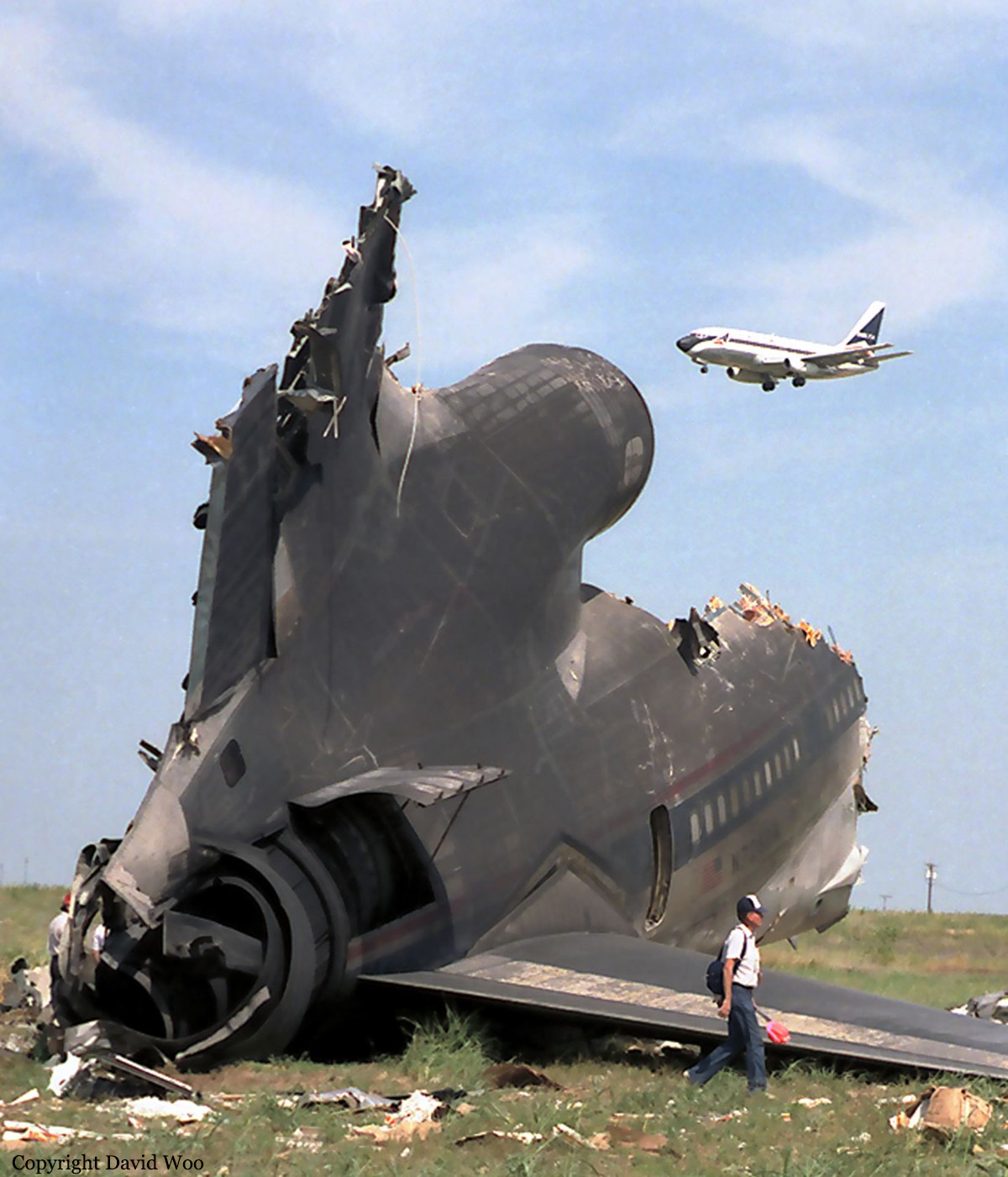
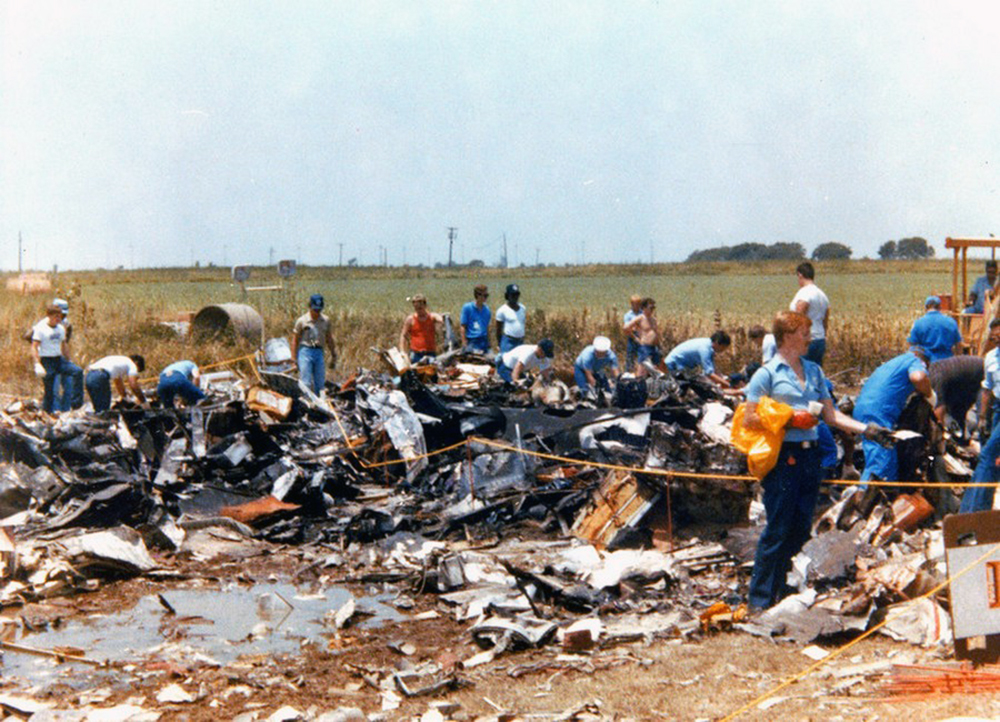
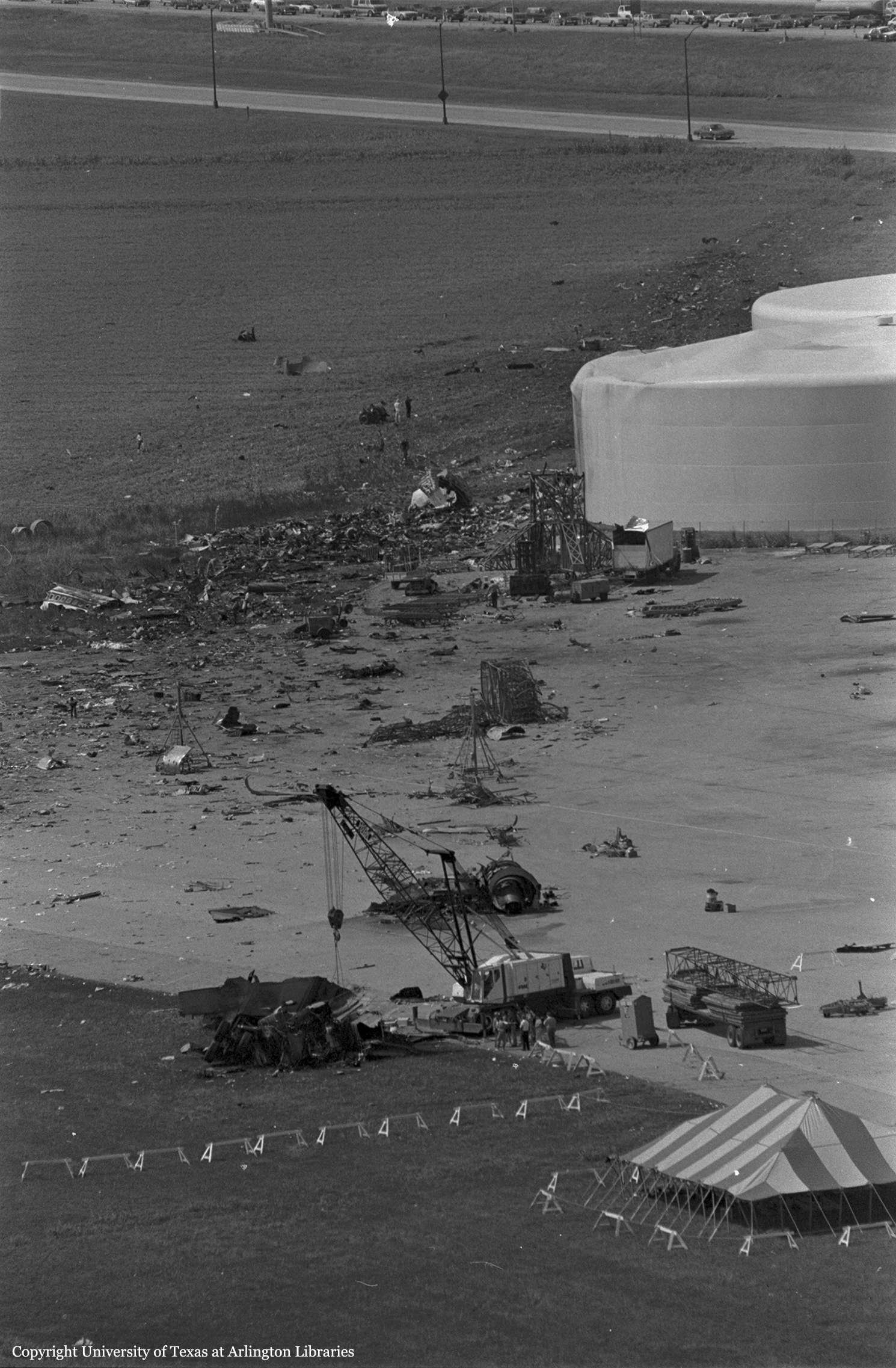
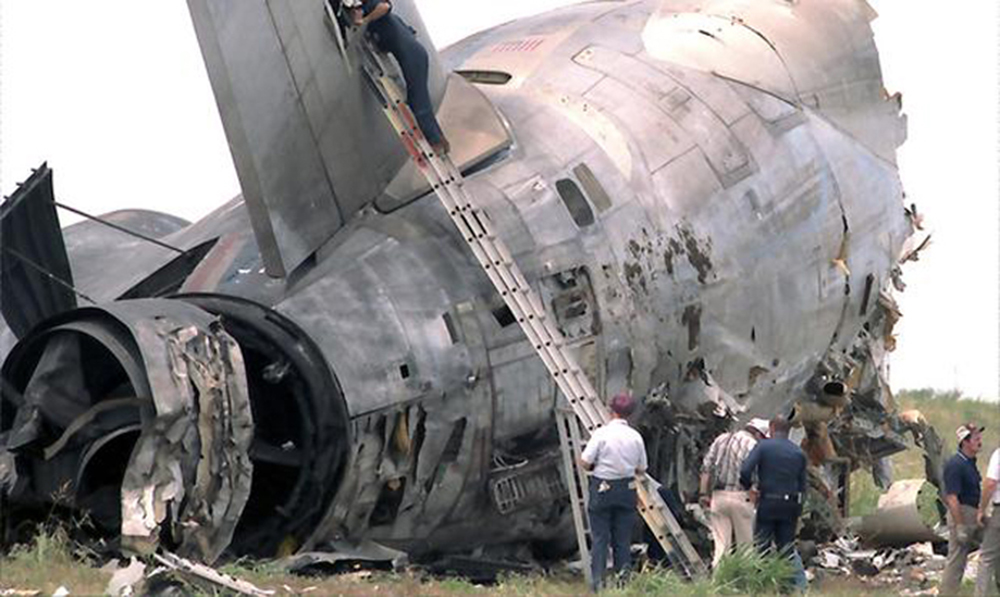
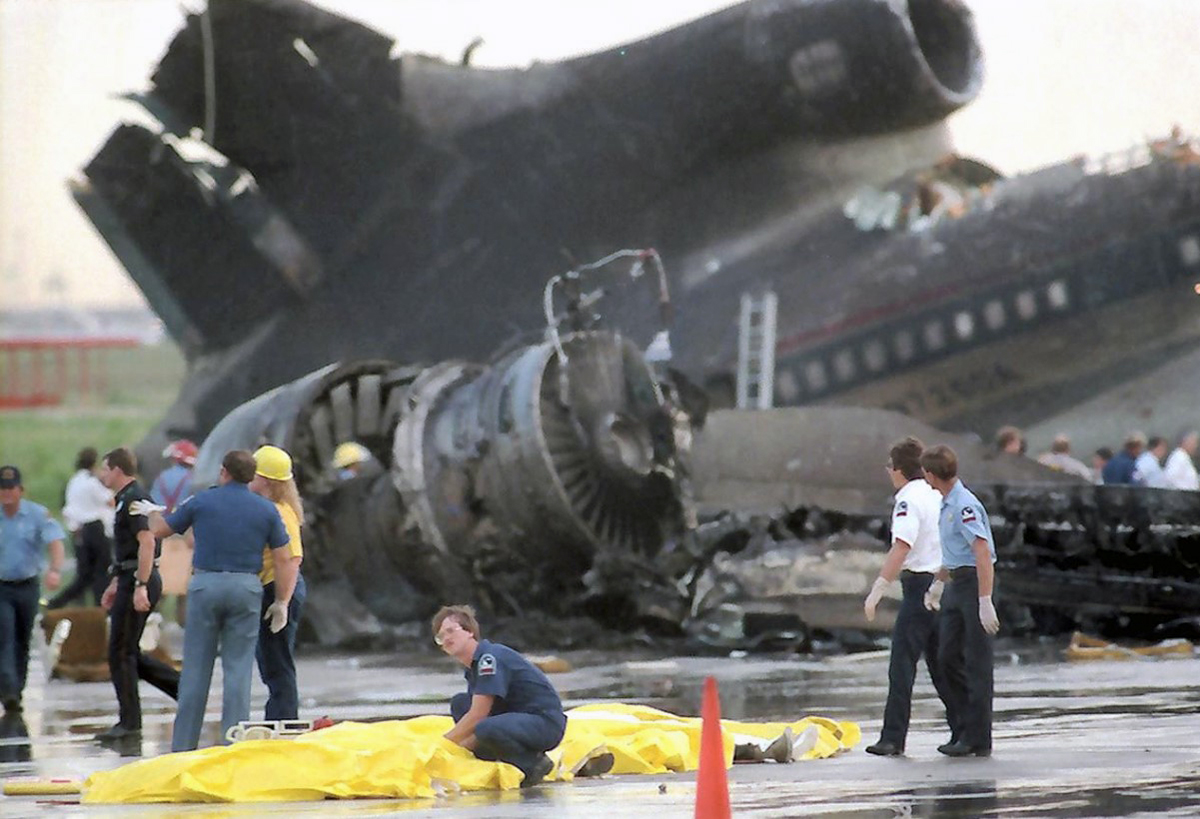
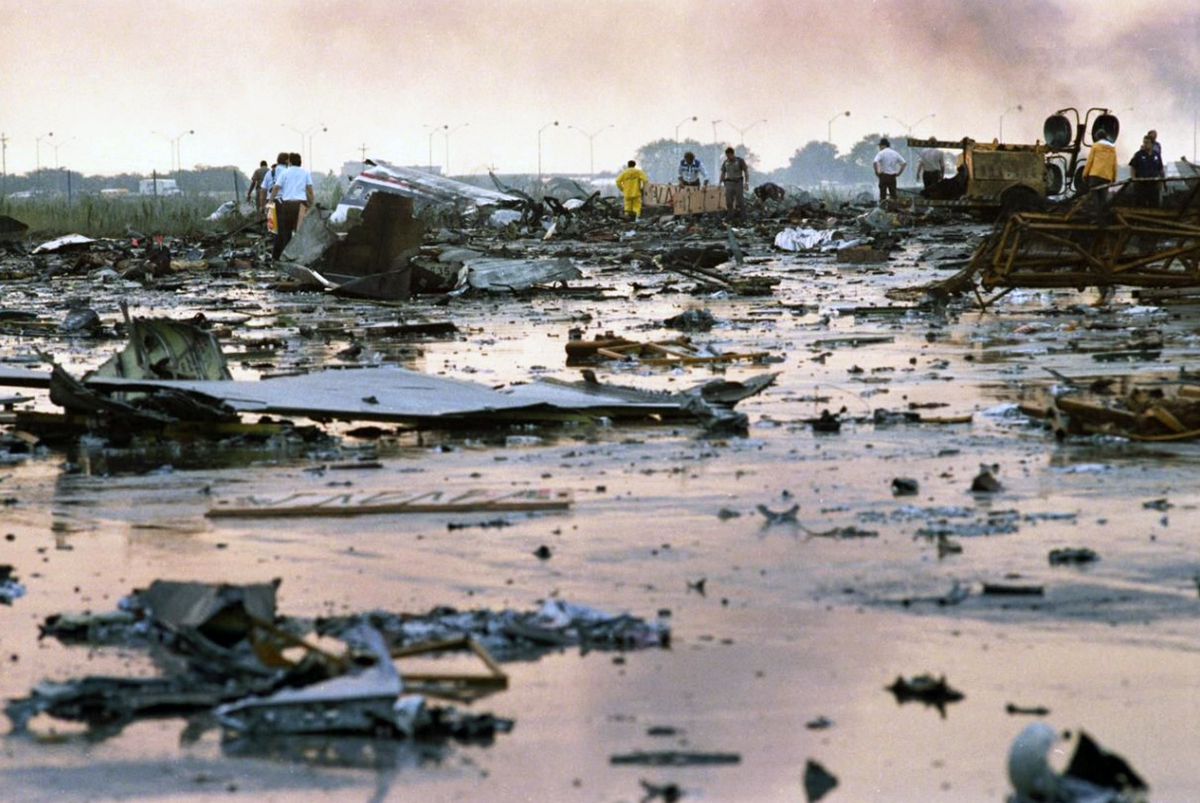

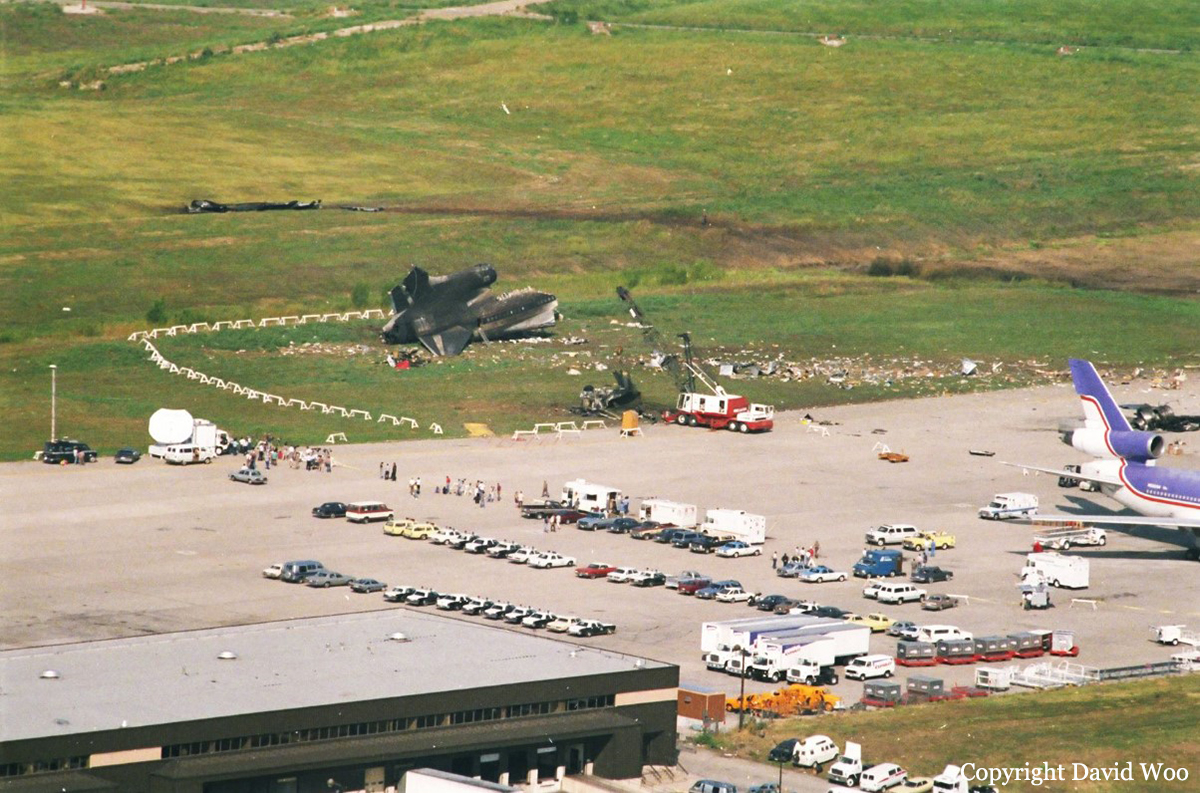
Crash of a Lockheed L-1011 TriStar 200 in Riyadh: 301 killed
Date & Time:
Aug 19, 1980 at 2205 LT
Registration:
HZ-AHK
Survivors:
No
Schedule:
Karachi - Riyadh - Jeddah
MSN:
193U-1169
YOM:
1979
Flight number:
SV163
Crew on board:
14
Crew fatalities:
Pax on board:
287
Pax fatalities:
Other fatalities:
Total fatalities:
301
Captain / Total hours on type:
388.00
Copilot / Total hours on type:
125
Aircraft flight hours:
3023
Aircraft flight cycles:
1759
Circumstances:
About 2108LT, the airplane departed Riyadh Airport en route to Jeddah, Saudi Arabia. Six minutes and 54 seconds after takeoff, while climbing to FL350, visual and aural warnings indicated smoke in the aft cargo compartment C-3. Climbing through FL220, a return to Riyadh was initiated. About two minutes later smoke was noted in the aft of the cabin, and passengers were panicking. At 18:25:26 the no. 2 engine throttle was stuck. The flight landed at about 2136LT and then taxied clear of the runway and came to a stop on an adjacent taxiway. While parked on the taxiway, the aircraft was destroyed by the fire and the three hundred and one persons on board the flight were killed.
Survival aspects:
The accident was survivable. The first door was opened about 23 min after all engines had been shutdown. The first rescue attempt was conducted at L-1 door. Most witness statements agree in content but differ slightly in the time factor element. A witness who participated in the first two efforts to open the doors stated that he was aboard fire truck n°4 was it was positioned near the left rear portion of the aircraft. He observed thick white smoke flowing from the bottom rear fuselage. At that time the aircraft engines were still running. A few seconds later, he observed smoke near the top of the fuselage, forward of the n°2 engine inlet. According to him, this smoke was followed almost immediately by flames in the same area. As the driver of n°4 started applying agent via the monitor, the witness dismounted and moved toward exit L-1. His route was outboard of n°1 engine which he thought was still running. On approaching L-1, he observed the fire chief and other people attempting to reach the L-1 emergency handle via a ladder which was placed on top of fire truck n°6. While fire personnel steadied the ladder, he climbed up and pulled the emergency handle. He was not certain if the door moved or not. An additional effort was attempted while he held onto and rode the monitor. While on the monitor, he pushed on the door to no avail. Most of :he group then moved to R-2 where another ladder had been positioned by other firemen. A firemen then climbed the ladder, operated the handle and the door opened in the emergency mode. The cabin was observed to be full of smoke and no life was observed nor were any human sounds heard. R-2 door was opened at 1905, 26 min after the aircraft came to a stop and 23 min after the shutdown of all engines. Shortly after (about 3 min) R-2 was opened, flames were seen progressing forward from the rear section of the cabin.
Survival aspects:
The accident was survivable. The first door was opened about 23 min after all engines had been shutdown. The first rescue attempt was conducted at L-1 door. Most witness statements agree in content but differ slightly in the time factor element. A witness who participated in the first two efforts to open the doors stated that he was aboard fire truck n°4 was it was positioned near the left rear portion of the aircraft. He observed thick white smoke flowing from the bottom rear fuselage. At that time the aircraft engines were still running. A few seconds later, he observed smoke near the top of the fuselage, forward of the n°2 engine inlet. According to him, this smoke was followed almost immediately by flames in the same area. As the driver of n°4 started applying agent via the monitor, the witness dismounted and moved toward exit L-1. His route was outboard of n°1 engine which he thought was still running. On approaching L-1, he observed the fire chief and other people attempting to reach the L-1 emergency handle via a ladder which was placed on top of fire truck n°6. While fire personnel steadied the ladder, he climbed up and pulled the emergency handle. He was not certain if the door moved or not. An additional effort was attempted while he held onto and rode the monitor. While on the monitor, he pushed on the door to no avail. Most of :he group then moved to R-2 where another ladder had been positioned by other firemen. A firemen then climbed the ladder, operated the handle and the door opened in the emergency mode. The cabin was observed to be full of smoke and no life was observed nor were any human sounds heard. R-2 door was opened at 1905, 26 min after the aircraft came to a stop and 23 min after the shutdown of all engines. Shortly after (about 3 min) R-2 was opened, flames were seen progressing forward from the rear section of the cabin.
Probable cause:
The initiation of a fire in the C-3 cargo compartment. The source of the ignition of the fire is undetermined. Factors contributing to the fatal results of this accident were:
- The failure of the captain to prepare the cabin crew for immediate evacuation upon landing and his failure in not making a maximum stop landing on the runway, with immediate evacuation,
- The failure of the captain to properly utilize his flight crew throughout the emergency,
- The failure of C/F/R headquarters management personnel to ensure that its personnel had adequate equipment and training to function as required during an emergency.
- The failure of the captain to prepare the cabin crew for immediate evacuation upon landing and his failure in not making a maximum stop landing on the runway, with immediate evacuation,
- The failure of the captain to properly utilize his flight crew throughout the emergency,
- The failure of C/F/R headquarters management personnel to ensure that its personnel had adequate equipment and training to function as required during an emergency.
Final Report:
